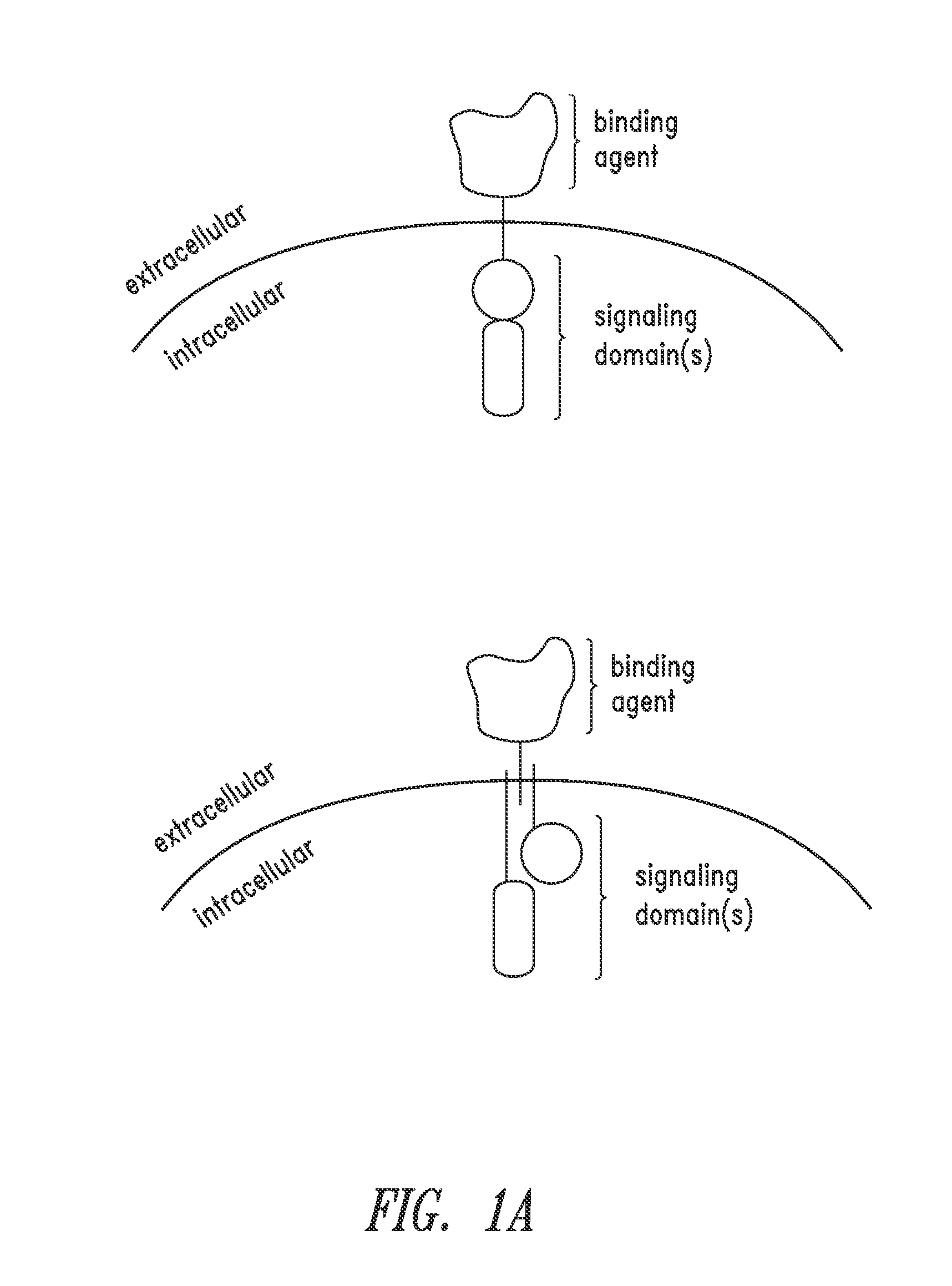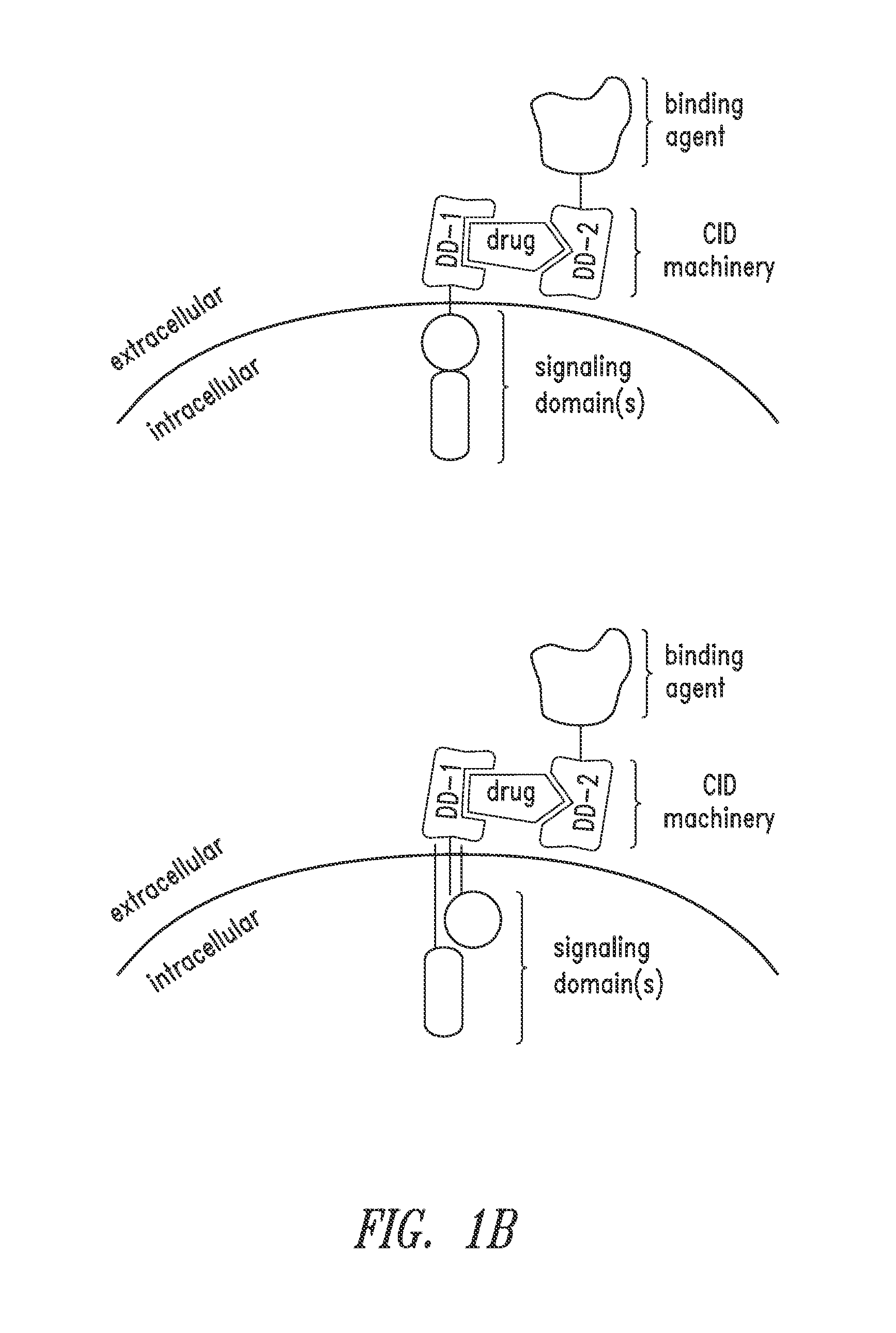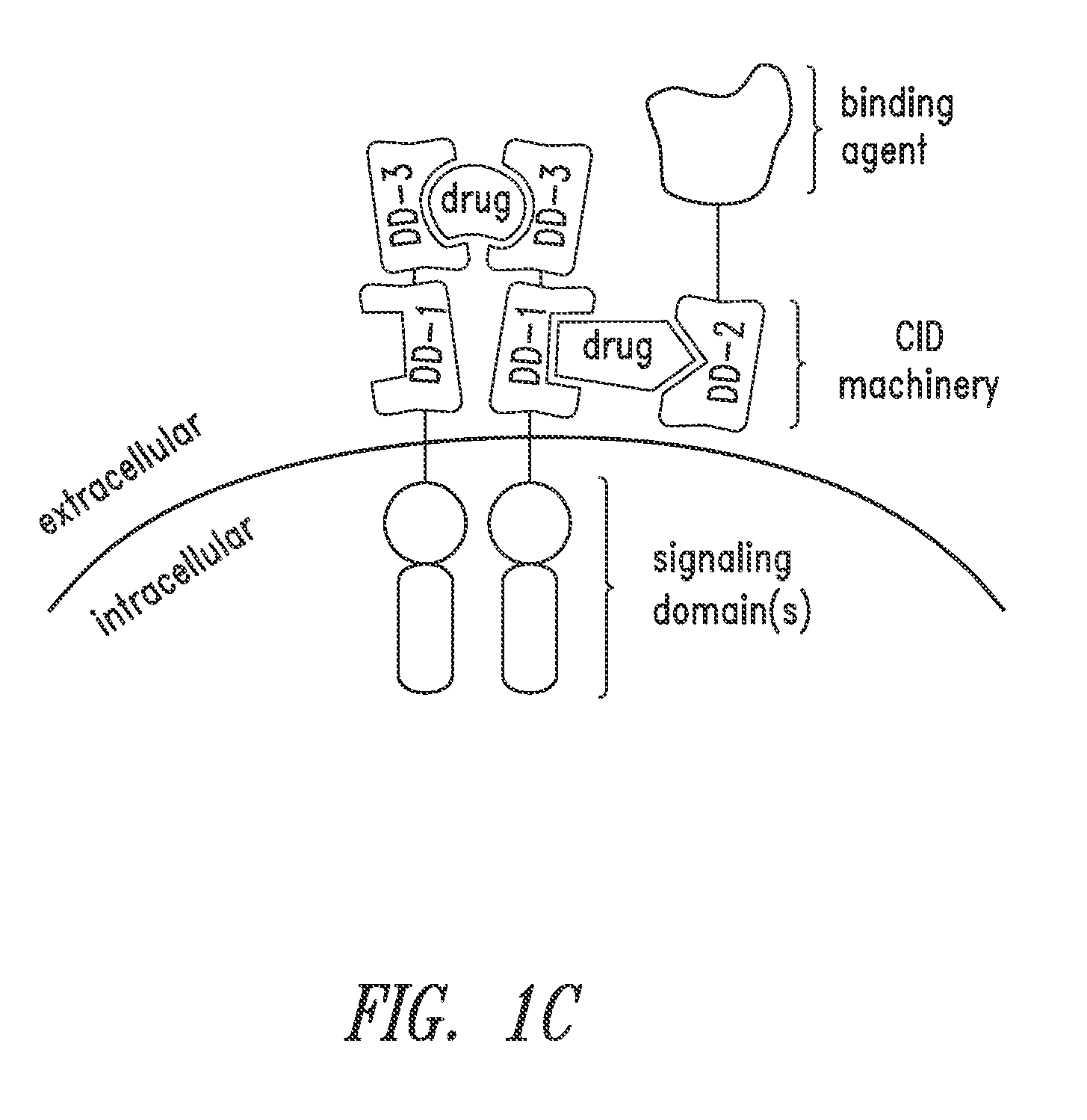Multipartite signaling proteins and uses thereof
a multi-component protein and signaling protein technology, applied in the field of compounding, can solve the problems of life-threatening cytokine storms associated with large numbers of activated t cells, inability to realize the full potential of t cell activation and proliferation, and inability to realize car-mediated t cell responses
- Summary
- Abstract
- Description
- Claims
- Application Information
AI Technical Summary
Benefits of technology
Problems solved by technology
Method used
Image
Examples
example 1
Construction of DARIC Binding and Signaling Components
[0297]The DARIC binding and signaling components were each separately cloned into a plasmid vector containing a T7 promoter, a hScn or hCD8 secretion signal, respectively, and a downstream linearization site. Linearized plasmids were then used as templates for in vitro transcription reactions, followed by 3′-polyadenylation and 5′-capping steps to create mature in vitro transcribed mRNA (IVT-mRNA) to be electroporated into primary human T cells. Human T cells were isolated from PBMCs by negative selection using paramagnetic beads and expanded with anti-CD3 / anti-CD28 beads for 48 hours prior to electroporation. Control electroporations using IVT-mRNA encoding fluorescent proteins were performed in parallel to confirm transfection efficiency, or 2A protein-linked fluorescent proteins were incorporated directly into the DARIC component mRNA species.
[0298]Exemplary IVT-mRNA encoding binding components (scFv specific for CD19 and mult...
example 2
Cytotoxicity of T Cells Encoding DARIC Components
[0300]Recombinant T cells expressing the two DARIC components were incubated with K562 target cells (a human myeloid leukemia cell line), which were modified to express either CD19 or CD20 antigen, to examine target cell lysis. Briefly, T cells were co-incubated with a 50:50 mixture of K562-CD19 and K562-CD20 target cell lines, at 3:1 or 10:1 T cell to target cell ratios. In experimental samples, 500 nM final concentration of the hetero-bivalent rapalog AP21967 was added. The relative percentage of each of the target cell lines was monitored by flow cytometry staining for the CD19 and CD20 antigens to evaluate cell lysis (see FIG. 3).
[0301]Four samples of primary human T cells were prepared by electroporation with IVT-mRNA encoding (i) an extensively validated single-chain chimeric antigen receptor (CAR) (CD19-CAR, SEQ ID NO.:14, positive control); (ii) the DARIC signaling component only (DSC, SEQ ID NO.:16, negative control); iii) th...
example 3
Cytokine Secretion Profile of T Cells Encoding DARIC Components
[0304]Recombinant T cells expressing the two DARIC components were incubated with K562 target cells (a human myeloid leukemia cell line), which were modified to express either CD19 or CD20 antigen, to examine cytokine expression. Briefly, IVT-mRNA transfected T cells were co-incubated with either the K562-CD19 or K562-CD20 cell lines using T cell to target ratios of 1:1, with or without the addition of 500 nM AP21967. Supernatants were isolated for analysis of cytokine production (see FIG. 4).
[0305]Two samples of primary human T cells were isolated, expanded, and then prepared by electroporation with IVT-mRNA encoding either (i) the validated single-chain CAR (CD19-CAR, SEQ ID NO.:13, positive control); or (ii) both DARIC binding and signaling components (DSC, SEQ ID NO.: 16 plus DBC-CD19, SEQ ID NO.:2). After extensively washing the expanded and electroporated T cells to remove residual cytokines from the growth media, ...
PUM
| Property | Measurement | Unit |
|---|---|---|
| Adhesion strength | aaaaa | aaaaa |
| Hydrophobicity | aaaaa | aaaaa |
Abstract
Description
Claims
Application Information
 Login to View More
Login to View More - R&D
- Intellectual Property
- Life Sciences
- Materials
- Tech Scout
- Unparalleled Data Quality
- Higher Quality Content
- 60% Fewer Hallucinations
Browse by: Latest US Patents, China's latest patents, Technical Efficacy Thesaurus, Application Domain, Technology Topic, Popular Technical Reports.
© 2025 PatSnap. All rights reserved.Legal|Privacy policy|Modern Slavery Act Transparency Statement|Sitemap|About US| Contact US: help@patsnap.com



